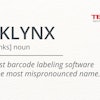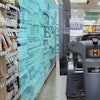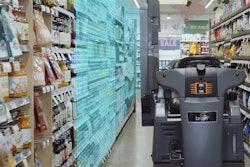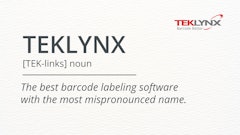
An unexpected halt in food and beverage production can drain millions by the hour; part of a global toll that Business Insider pegs at $1.4 trillion annually.
One ham slicing line underwent unplanned stops every three to four months due to recurrent blade breakages. Each incident triggered costly emergency repairs and lost production hours. By deploying an AI-powered predictive maintenance system, the team uncovered suboptimal product temperature and progressive mechanical fatigue as the cause.
Predictive maintenance, as IBM describes it, “optimizes the performance and lifespan of equipment by continually assessing its health in real time.” In the slicing line example, continuous monitoring of vibration, blade frequency, and product temperature made it possible to accurately model fatigue-related failures.
Across the industry, AI-powered predictive maintenance in food processing reduces downtime by around 30% and cuts labor costs by up to 15%. Mordor Intelligence found that by analyzing vibration and acoustic data, these systems allow maintenance teams 2–4 weeks of lead time to intervene, preventing losses of up to $50,000 per hour during emergency stoppages.
Though these statistics are potent, predictive maintenance is no panacea. To see a true return, leaders must pair it with disciplined execution, informed oversight, and a clear-eyed grasp of operational realities.
Which equipment benefits most from AI-driven maintenance?
Nearly half of food and beverage manufacturers are channeling capital into AI this year as a lever to curb costly stoppages and defend slim margins. An overwhelming 88% of executives admit their technology bets fall short of delivering the value they envisioned. Meanwhile, 85% worry that reshaping their operating models to sustain new ambitions remains a barrier to ROI.
The wisest entryway into action is to consider how machinery responds to AI-based predictive models. The best candidates are assets with predictable mechanical cycles and stable operational data. In food manufacturing, these could be:
● Rotating and cutting equipment: Slicers, conveyors, and motors exhibit vibration and wear signatures that AI can detect early.
● Filling and packaging machines: These reveal trackable wear trends in seals, bearings, and precision components.
● Thermal systems: Show degradation through temperature deviations, making anomalies straightforward to flag before costly failures occur.
These tools rank among the strongest candidates because their performance and degradation follow measurable, repeatable patterns. However, each demands tailored sensing and analysis to account for unique operating conditions, failure modes, and maintenance thresholds.
Even with steady data and predictable workflows, some failures, triggered by external factors like variable raw materials or sporadic packaging defects, resist accurate forecasting. Closing the gap requires additional inputs from vision AI or inline quality sensors, and feedback loops, enriching predictive models with cross-system insight to catch issues earlier.
Why feedback loops matter
Feedback from vision and inline sensors closes blind spots and is tied to 30–40% fewer unexpected downtime events and 20–30% lower maintenance costs in multi-case analyses. Still, while adding richer, continuous data via sensor fusion or streaming is critical for ML predictive models to learn, it’s not enough on its own. The accuracy of AI alerts still depends on human operators to validate or correct them. Each intervention becomes a valuable training exercise.
Without that feedback loop, even the most advanced AI will plateau. If alerts are routinely ignored or overridden without explanation, the system misses the context it needs to refine predictions, eroding the very gains the technology was designed to deliver.
In the slicing operation, frontline input refined the algorithm’s ability to distinguish between genuine threats and noise. For instance, consistent vibration pattern shifts could indicate cracks in the blade, but they could also be temporary after adjustment to conveyor speed. By reinforcing good interventions and explaining when they were bad, operators began to see fewer and more reliable alerts. They trusted the alerts more, which in turn gave the AI better data.
Ultimately, predictive maintenance platforms should prompt operators to confirm or dismiss alerts, along with a short reason. Over time, this human-in-the-loop approach, known as reinforcement learning, improves alert accuracy and reduces false positives.
Quick wins that win over executives
Getting company-wide buy-in is no small feat. For senior leadership, measurable ROI is the deciding factor. Whereas for frontline workers, value is measured in fewer disruptions and more control over their day-to-day workflow. Pilot projects or “quick wins” offer a great tool to demonstrate both.
By fine-tuning fill-head temperatures and recalibrating maintenance intervals, a beer bottling plant eliminated recurring nozzle jams that had been causing short but frequent line stoppages. The immediate gains from using fewer spare parts and stabilizing production were persuasive enough to unlock funding to extend predictive maintenance to the kegging and labeling lines.
With the right data infrastructure in place—typically via SCADA, programmable logic controllers (PLCs), or historical and real-time equipment performance data—plants can begin realizing value in 6–8 weeks.
Early wins often come from visibility alone. In the ham slicing case, the system spotted abnormal vibration patterns and subtle temperature deviations within the first month. Maintenance intervals and product handling parameters were adjusted almost immediately, preventing a critical failure before it happened.
Predictive maintenance pays for itself when it’s deployed with precision, targeting assets whose failures are both costly and predictable. Systems that integrate operator feedback sharpen their accuracy more quickly. This helps turn raw sensor data and human interventions into actionable foresight. Launching with a high-impact pilot doesn’t just prove the concept; it shows operators the downtime you’ve erased, shows executives the money you’ve saved, and suddenly everyone’s pushing for the next rollout.


















